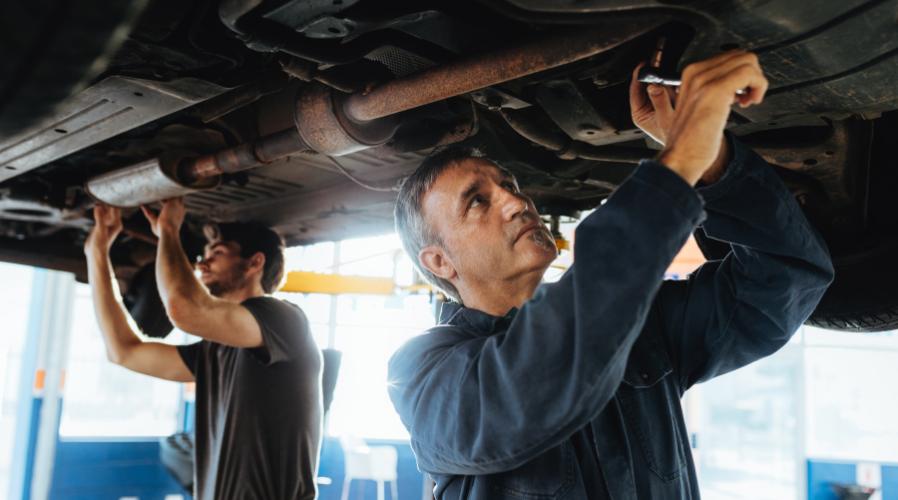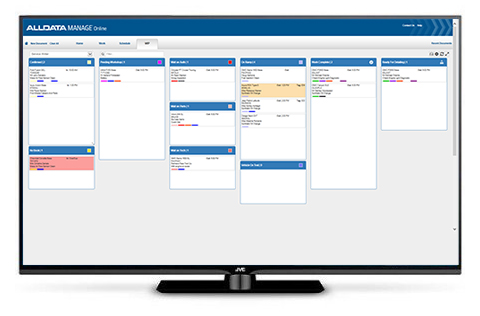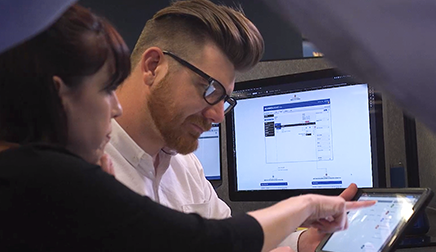
Keeping and grooming your techs for success

Editors note: this article was written before the pandemic; the current unemployment numbers are likely higher.
There are roughly 750,000 automotive technicians and diesel mechanics nationally, the U.S. Bureau of Labor Statistics reports. Let’s say that you had the good fortune to have hired 10 of the best technicians in your area. Their skill levels range from fledgling lube technicians to highly qualified master technicians. What can you do to ensure they keep their toolboxes anchored in your shop for years to come?
In this article, I’d like to delve into some eye-opening realities facing the automotive industry, then make a few suggestions about how grooming your technicians for success may be the key to boosting your retention numbers.
The automotive industry’s shortage of qualified technicians is no secret. In a recent report from the Automotive Service Association (ASA), 45 percent of shop owners felt the technician shortage was their number one challenge. According to the Bureau of Labor Statistics, , the industry will need about 46,000 more technicians by 2026 to meet anticipated demand and respond to attrition. As the gap between supply and demand widens every year, the financial health of independent auto repair shops, collision shops, and dealerships are being threatened. The costs associated with unfilled positions is equally sobering. For example, if a technician in a busy shop can generate $1000 of gross revenue per day, losing that tech could potentially cost the shop an average of $20,000 each month that position remains open. Now multiply that revenue loss by two or three more technicians who decide to work elsewhere.
In a recent report from the Automotive Service Association (ASA), 45% of shop owners felt the technician shortage was their number one challenge.
In a 2018 survey conducted by automotive research and consulting firm Carlisle & Co, about one-fourth of technicians said they didn't expect to stay with current employers beyond the following two to three years. Also noted in the same survey, only one in four technicians expressed high overall satisfaction with their job – far below the satisfaction levels of service managers (57 percent) and service advisers (42 percent). Carlisle & Co also noted that the overall technician satisfaction rate had dropped 3 points since a similar survey they completed in 2016. Not only are shops having a hard time finding and hiring technicians, they are also having difficulties retaining them. It’s also interesting to note that in both Carlisle & Co surveys, the typical technician would not recommend an automotive career to a friend. What can shops do to overcome these harsh realities?
Now that we’ve discussed some of the difficult challenges facing the industry, let’s focus on what you can do to cultivate an environment for your technicians to not only thrive, but stay on your payroll for a long time …and even endorse your shop to other technicians.
Technical Training and Defining Career Paths
If you want to have the best, most qualified and productive auto technicians in the business, continuing education classes are mandatory. I’ve had shop owners tell me that they are afraid to sink a lot of money into training only to have the technician leave and take that knowledge to another shop. My response is, “What if technician leaves because you didn’t?” In the 2018 Carlisle & Co survey, technical training was one of top the benefits technicians were looking for, and younger technicians also noted that they often lacked a clearly defined career path.
With today’s technology changing at a rapid pace, automotive technicians must be able to operate a variety of diagnostic tools and correctly interpret readings as well as make repairs on many different makes and models of vehicles. To keep your advanced technicians from becoming overwhelmed, it’s important to make sure they have an opportunity to continue their education. Investing in them will boost their confidence and they will go the extra mile to help your shop be successful.
What about your “B” and “C” techs? Prove to them that you have a vested interest in their future. To help better define a clear career path for them, ask them where they want to be in five and 10 years, then help them get there. Give them responsibilities that allow them to grow and encourage them to gain new skills. Along with education and certification comes the opportunity for advancement and pay increases. In the absence of a true apprentice program in many states, shops can create their own. The important thing is that you provide them with a well-defined program that identifies what training, certifications and time-in-service is necessary to advance to each level. You can also make high customer satisfaction scores, or low come-back numbers serve as incentives to reduce the time-in-service requirement. Probably the most vital component in administering a successful apprentice program is making good on your promises. Nothing will make a technician roll their toolbox out of a shop faster than broken promises.
With today’s technology changing at a rapid pace, automotive technicians must be able to operate a variety of diagnostic tools and correctly interpret readings as well as make repairs on many different makes and models of vehicles.
The next concern shop owners bring up when I suggest a robust training program is cost. It doesn’t have to cost a fortune to help your less-experienced techs learn what they need to take on more difficult jobs and your master techs stay in step with changing technology. There are numerous national and local technical training resources to choose from, but here are a few examples of low-cost, high-quality technical training resources I’ve used in the past with great results.
Parts suppliers such as AutoZone offer an impressive catalog of courses that are available online or as live in-classroom or in-shop seminars. Often the courses are discounted if you purchase parts from them and can be packaged together with an overall business support and service program. If you are looking for great technical training at a very reasonable price, teaming up with your parts supplier is a smart option. An important mutual benefit of this partnership is that well-trained technicians are less likely to misdiagnose a problem and install the wrong parts. That in turn, results in fewer returned parts to the supplier and a substantial increase in your customer satisfaction scores. When you’re successful, they’re successful.
Reasonably priced technical training can also come from resources such as Automotive Video Innovations (AVI). AVI develops and produces a wide variety of automotive training videos for service and repair centers, parts distributors and suppliers and automotive schools. Their comprehensive training can be delivered online, on DVDs and when possible, through live seminars. The courses are customizable to the client’s needs regarding content, length and location. Technicians can access courses individually at home, or as many shops do, have a pizza and training session at the shop after business hours. AVI’s courses are routinely updated and new courses are created to meet the latest training needs of the industry. The ALLDATA Tech-Assist team uses AVI as one of their continuing education resources. Their informative and relevant courses help keep the team up to date on the latest technologies.
Another method to save money on training is to have the shop owner or one technician attend a course then come back and relay the important course details in a formal training session during a lunch break or after work. Some technicians find it easier to learn from their peers than in an online or instructor-led classroom environment.
Education also plays a key role in shop profitability. When you invest in education, you have more qualified technicians successfully taking on the harder jobs that you may have had to refuse because your top technician was sick or on vacation. As a valuable bonus, technicians who know you have a genuine interest in advancing their careers are more likely to love their job enough to stay on your payroll for years. Technical education is a valuable investment in your business!
Communication is Vital
Communication can be a weak link in a shop’s daily operations. Poor communication practices can often hurt a shop’s customer satisfaction ratings and result in high staff turnover. There are several communication opportunities in an automotive shop that can help your technicians be more successful and stay engaged, while also strengthening your shop’s operations. Sometimes grooming a technician for success means exposing them to superior shop communication practices – ones that differentiate your shop from the others. Let’s explore three that I’ve seen make the biggest impact.

Vehicle Status Board – Install a vehicle status board that is clearly visible on a wall in a common area and is continually updated so anyone in the shop, including service writers, shop owners, and technicians know where every vehicle is in the repair cycle. Being able to see a vehicle’s status at a glance throughout the day can be very beneficial when customers call to inquire when their vehicle will be ready.
It’s also a great way for technicians to easily see if extra work has been sold or if parts have been ordered for the vehicle they’re working on.
Shop Meetings – Hold both daily and quarterly shop meetings. Each type of meeting will have a distinct agenda. Daily meetings can be held once in the morning before work begins and again in the evening before technicians go home. Daily meetings shouldn’t take more than 5-10 minutes; quarterly meetings may take an hour or more. Attendance should be an “all-hands-on-deck” requirement. It’s always important to finish meetings by ensuring accountability for action items that were discussed during the meeting. Assign who is responsible for carrying out the tasks and by what deadline. Write “action” items on a dry-erase board and ask the team to take notes.
These types of open communications give technicians a sense that they are part of a close-knit team and they have a vested interest in their own success as well as the shop’s.
Morning/Evening Meetings – Morning meetings can include information such as the status of in-progress jobs, identifying impediments, who will be absent that day and what the day’s workload looks like. Evening meetings should cover the status of in-progress jobs, any bottlenecks or issues that arose that day (such as broken special tools or parts delivery issues), and who will be off work the next day. The quick meetings help to smooth out workflow and reduce wasted time. An informed crew is an efficient crew.
Quarterly Meetings – Quarterly meetings on the other hand, are often coupled with a team lunch or dinner. These meetings offer a great opportunity to reinforce company goals and culture. You may want to take this time to announce employee promotions, acknowledge extraordinary success stories and hand out rewards. You can also discuss the company’s quarterly revenue results, customer satisfaction scores and cycle time numbers as well as rolling out new company policies and benefits. The quarterly meeting is an outstanding way to unify the team and to keep them engaged in their jobs.
Performance Reviews
Meet at least once a month with individual technicians to discuss their productivity and efficiency related metrics, training, and progress towards their overall goals. Tie a part of your employees’ wages to the company’s performance. This will align their interests with the company’s revenue and profit goals and will serve as an incentive to stay with the company as it grows. Also, conduct what I like to call “retention interviews.” Ask your technicians what they think could improve their overall efficiency or the shop’s. Listen to what they suggest, determine if it’s feasible, and then be sure to respond by either implementing what they suggested or by notifying them why you can’t.
These types of open communications give technicians a sense that they are part of a close-knit team and they have a vested interest in their own success as well as the shop’s. By the way, if you have over seven employees, it’s a good idea to enlist the help of a shop foreman or service writer/manager to assist you with your communication strategies.
And finally, treat everyone with respect. Your staff wants to know that are respected and appreciated. As the old saying goes, people may forget the things that you said, but they will always remember the way you made them feel. An important element of grooming your technicians for success is proactively establishing a culture that builds strong relationships with them – the type that inspires a long-term commitment.
Related Articles
By Rich Diegle
Recruiting and Retaining Exceptional Automotive Techs Part 1
Rich discusses how to use highly effective interview tactics to hire your “dream team” and what to do to entice the best techs to choose your shop over your competition.
Recruiting and Retaining Exceptional Automotive Techs Part 2
Rich reveals what unique benefits you could offer technicians and ways to cultivate a productive environment and culture.
Want to see how ALLDATA can improve tech efficiency? Check out our suite of products, each designed to contribute to both shop efficiency and productivity.
If you would like to read more articles like this one please subscribe to ALLDATA News.







